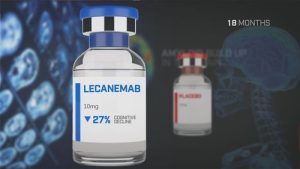Cancer – is the second leading cause of death worldwide, only second to cardiovascular disease, accounting for nearly 10 million deaths in 2020, that’s 1 in 6 deaths. The global prevalence has risen from 0.54% in 1990 to 0.64% in 2019. The most common types of cancer include lung, prostate, breast, skin, and bone cancer. The correlation between our genes and the occurrence of cancer has been heavily studied in the last century. This article will give you a snapshot of their interesting relationships.
Cancer as a genetic disease
First up, all cancers share common genetic and molecular mechanisms to a certain extent. They all start with a change(mutation) in genes that control the ways cells grow and multiply. Usually, the cells do so in a controlled manner so that the number of cells in each of our organs is roughly the same as our body needed them to be. When that mutation occurs, cells grow in an uncontrolled manner, which forms a tumour, and may spread to distant sites (metastasize) through the blood or the lymphatic system.
The question now is, why do some people have cancer run in the family? It does not mean that it is directly passed down from parents to children. What happens is that there are certain genes that predispose people to have certain types of mutation which cause certain types of cancer. For example, BRCA1 and BRCA2 genes are frequently associated with breast cancer; the APC gene is associated with colorectal cancer; the BCL-2 gene is associated with B cell lymphoma. The unfortunate ‘cancer gene’ can be inherited from parents to children if present in the sperm or egg.
Two types of genes related to cancer
Broadly speaking, there are two types of genes that control the cell cycle. The proto-oncogene and the tumour suppressor genes.
- Proto-oncogene: helps with normal cell division and cell proliferation. The gain-of-function mutation in a proto-oncogene can lead to overexpression of signalling proteins and growth factors, and thus, uncontrolled cellular proliferation. Examples of proto-oncogene products include protein kinase B, Ligand-directed transcription factors, and GTP-binding protein.
- Tumour suppressor genes: opposite to proto-oncogenes which divide and proliferate the cell, tumour suppressor gene products control and suppress cell proliferation. Loss of function mutation in those genes increases the risk of unsuppressed cell proliferation. Typical examples of such genes include TP53, Rb, APC etc.
The fine balance of proto-oncogene and tumour suppressor genes ensures our cells grow and proliferate in a controlled manner. Any mutation in any one of the proto-oncogene or tumour suppressor genes results in uncontrolled proliferation of cells, thus a local tumour formation.
Genetic testing
Genetic testing used to be one of the most cutting-edge medical technologies around 20 years ago. Now, you can order it online, self-collect the sample, and have the report delivered to your mailbox for less than 200 USD. Depending on the type of tests you undertake, some can estimate the chance of you developing it in your lifetime and investigate whether you have certain types of cancer genes. Not everyone needs a test from a medical perspective. People with cancer who run in the family are sometimes advised by their doctors to undertake the test.
Cancer as a multifactorial disease
Yes, cancer is genetically related. But have you wondered: what caused all those nasty genetic mutations that give us cancer? Though some genetic mutations can happen spontaneously – a natural process during billions of genetic replications that happen in our body each day, many are caused by other factors. Common life factors that make us prone to the disease include:
- Age
- Alcohol
- Diet
- Radiation
- Cancer-causing substances: heavy metals, arsenic, benzene, silica etc
- Infections
- Immunosuppression
Every now and then you might hear on the news that scientists find another substance or lifestyle which can cause cancer. The list goes on.
Conclusion
The research into the relationship between cancer and genes has led to significant progress in cancer treatment. It helps us better understand the exact mechanism of cancer formation and how we may utilise that to not only treat cancer but also prevent it from happening altogether.













